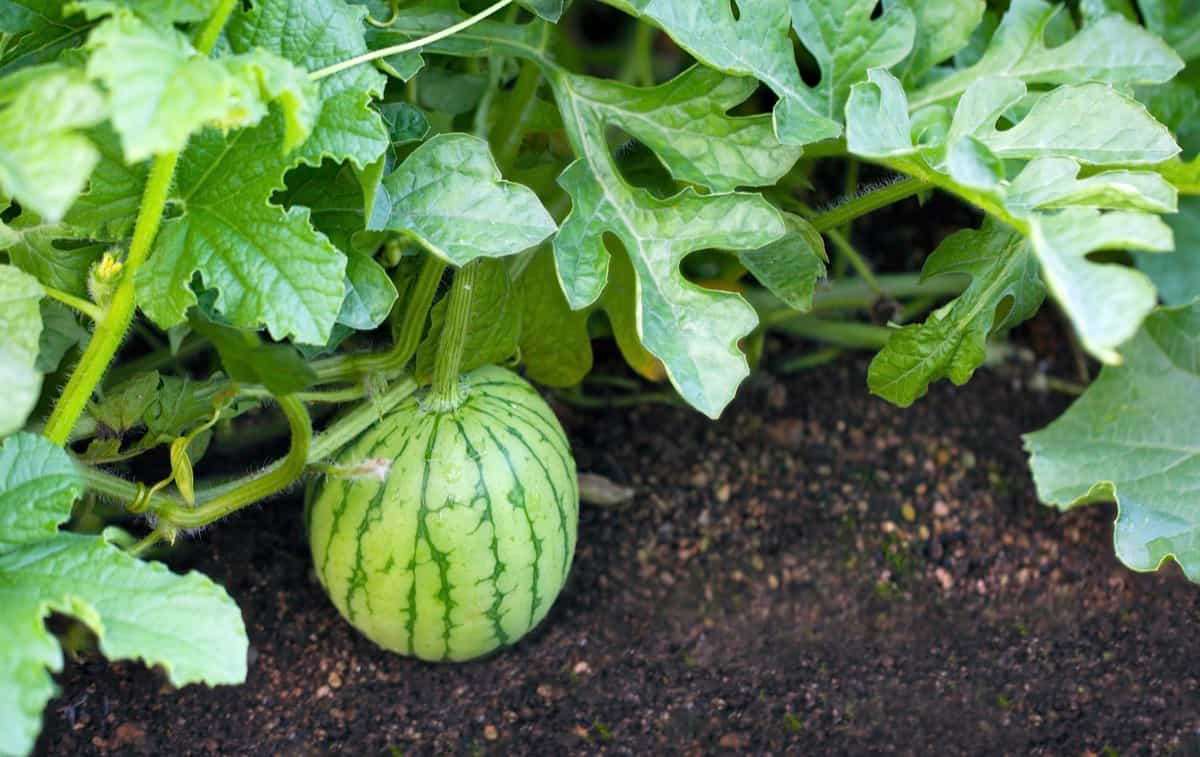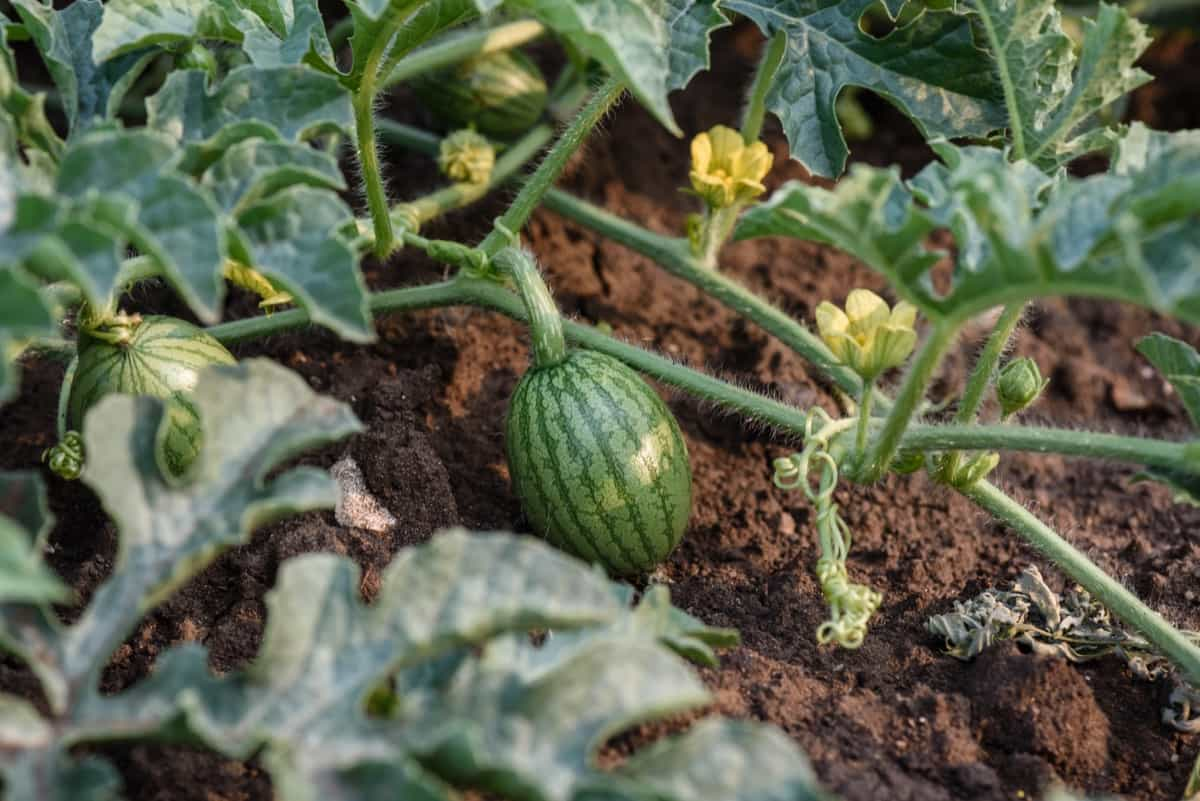Thanks to its large agricultural industry and favorable climatic conditions, watermelon farming is a popular agricultural practice in Texas. This detailed article delves into the world of watermelon farming in Texas, discussing the impact of climate, planting techniques, and care practices for a successful harvest. Below we learn how to start watermelon farming in Texas and when to start watermelon farming in Texas.

How to Start Watermelon Farming in Texas
Climate of Texas
Texas has a diverse climate, with its vast expanse stretching across multiple climate zones. However, watermelons thrive in regions with long, warm growing seasons and well-draining soil. Warm temperatures and ample sunshine characterize the ideal climate for watermelon farming in Texas, as this fruit requires a minimum of 80-100 frost-free days to mature. The state has multiple climate zones with varied temperature and precipitation trends. The Gulf
Coast region is warm and humid, with relatively mild winters and hot summers. This region is particularly suitable for growing watermelons, as the humid climate promotes growth and deters some pests. The South Texas Plains and Rio Grande Valley are well-suited for watermelon farming, thanks to their long growing seasons and high temperatures.
The climate in these regions is predominantly semi-arid to arid, with infrequent precipitation and hot, dry summers. In contrast, Texas’s Panhandle and High Plains regions experience cooler temperatures and shorter growing seasons, making watermelon farming more challenging. However, with proper care and attention, it is still possible to cultivate watermelons in these regions, albeit on a smaller scale.
Planting
Planting watermelons in Texas requires careful consideration of factors such as site selection, soil preparation, and planting time. Watermelons need 6-8 hours of sunlight every day and well-draining soil.
Soil Preparation: Begin by conducting a soil test to determine the soil’s nutrient levels, pH, and texture. Ideally, watermelons grow best in sandy loam soil with a pH of 6.0-6.5. Lime raises pH, whereas sulfur lowers it. Improve soil fertility and drainage using compost or well-rotted manure. This ensures plants get nutrients for optimal development.
Planting Time: Watermelon seeds should be planted in Texas after the last frost date, typically between April and May, depending on the region. To get a head start, consider starting seeds indoors for 4-6 weeks before transplanting them outside. This can give your watermelon plants a significant advantage in growth and development.
In case you missed it: How to Increase Female Flowers in Watermelon: Explained in 10 Simple Steps

Spacing: Watermelon vines require ample space to spread out and grow. Plant seeds or transplants at least 36-60 inches apart in rows, with rows spaced 6-8 feet apart. This spacing will help reduce competition for nutrients and sunlight, leading to healthier, more productive plants.
Irrigation and Fertilization
Irrigation
Watermelon plants require consistent moisture throughout the growing season, with the most critical periods being during fruit set and development. Inadequate water supply during these stages can reduce fruit size and quality. Drip irrigation systems in Texas are highly recommended for watermelon farming, as they provide consistent moisture while minimizing water waste. Aim to deliver water at a rate of one to two inches per week, making adjustments as required dependent on the amount of rainfall and the moisture content of the soil.
Fertilization
A balanced fertiliser with a ratio of 1:2:2 (N-P-K) is recommended for watermelon growing because it provides the optimal balance of nutrients for rapid growth and abundant fruit production. Apply fertilizer at planting time and during the vegetative and fruiting stages. Conducting a soil test before planting will help determine the specific nutrient requirements for your farm.
It’s essential to avoid over-fertilizing watermelons, as excessive nitrogen can lead to excessive vine growth at the expense of fruit production. Instead, provide adequate phosphorus and potassium to encourage healthy fruit development. Additionally, consider incorporating organic matter and micronutrients, such as magnesium and calcium, to support overall plant health.
Pest and Disease Management
Watermelon farming in Texas can be susceptible to various pests and diseases, which can significantly impact yield and quality. Common pests include aphids, cucumber beetles, and spider mites, while diseases such as anthracnose, fusarium wilt, and gummy stem blight can also pose threats. To effectively manage pests and diseases, adopt an integrated pest management (IPM) approach, which combines cultural, biological, and chemical control methods.
To minimize pest and disease pressure, cultural practices include proper site selection, crop rotation, and sanitation. Plant blooming plants near your watermelon crop to attract predatory insects like ladybirds and lacewings. Chemical control should be used as a last resort and in accordance with label instructions. When selecting pesticides, opt for those with a low environmental impact and minimal harm to beneficial insects. Additionally, monitor your crop regularly for early signs of pest or disease infestation, as early intervention can significantly reduce potential damage.
Harvesting and Storage
After planting, harvesting a watermelon normally happens between 80 and 100 days later, depending on the variety and the circumstances under which it was grown. A watermelon is ready to be picked when it has a dull, matte look, a yellowing ground spot where the fruit contacts the earth, and a dry tendril opposite the fruit’s stem. Other indicators include yellowing ground spots where the fruit touches the soil.
In case you missed it: Hydroponic Watermelon Farming in a Greenhouse: Key Rules to Start from Scratch

When harvesting watermelons, use a sharp knife or pruning shears to cut them free from the vine while still keeping a short stem attached to the fruit. This will assist in preventing disease-causing organisms from entering the fruit and lengthen the fruit’s shelf life. Proper storage is crucial for maintaining watermelon quality and preventing spoilage. Store harvested watermelons in a cool, well-ventilated area with a temperature of 50-60°F and a relative humidity of 85-90%. Under these conditions, watermelons can be stored for 2-3 weeks.
Conclusion
Watermelon farming in Texas is a profitable and rewarding venture, thanks to the state’s diverse climate and agricultural resources. By understanding the unique climate conditions, employing proper planting techniques, and providing the necessary care and attention, farmers can enjoy a bountiful watermelon harvest. By adopting sustainable and environmentally friendly practices, watermelon farming in Texas can continue to thrive, contributing to the state’s rich agricultural heritage and providing a delicious, refreshing treat for all to enjoy.
- Feed Your Flock for Less: Top 10 Tips to Save on Chicken Feed
- Ultimate Guide to Ossabaw Island Hog: Breeding, Raising, Diet, and Care
- Hatching Answers: The Top 10 Reasons Your Chickens Aren’t Laying Eggs
- Eggs and Economics: Breaking Down the Cost of Raising Backyard Chickens
- Defend Your Greens: Proven Methods to Keep Iguanas Out of Your Garden
- Ultimate Guide to Cinnamon Queen Chicken: A Comprehensive Guide for Beginners
- Ultimate Guide to California Tan Chicken: Breeding, Raising, Diet, Egg-Production and Care
- Ultimate Guide to Marsh Daisy Chicken: Breeding, Raising, Diet, and Care
- 10 Types of Chicken Farming Businesses You Can Start for Profits